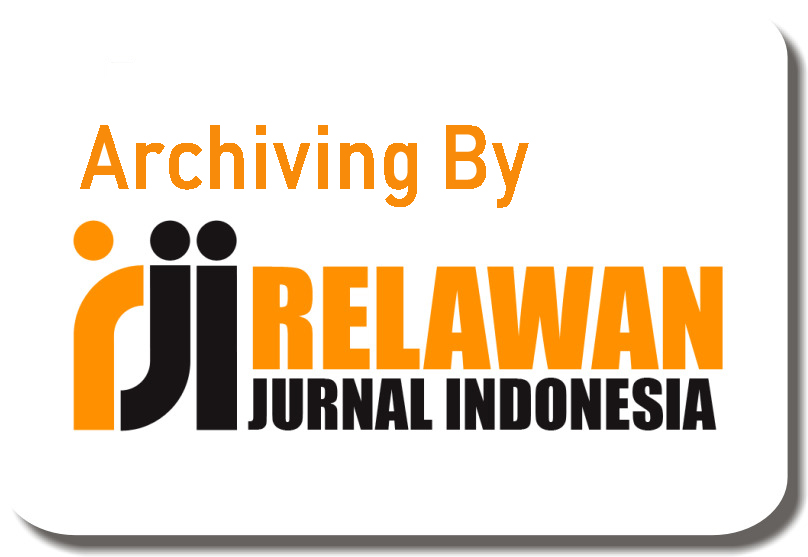An Analysis of Character Education Values in English Textbook Entitled “Interactive English”
Abstract
Keywords
Full Text:
PDFReferences
Aboujirlie, C. (2002). Character Education: Informational Handbook and Guide II for Support and Implementation of the Students Citizen Act of 2001 (Character and Civic Education). State Board of Education Department of Public Instruction Middle Grades Division
Agboola, A., & Tsai, C.A. (2012). Bring Character Education into Classroom. European Journal Of Educational Research University of the Incarnate Word, 1(2), 163-170. http://www.akademikplus.com/eujer/index.html
Almerico, G. M. (2014). Building Character Through Literacy with Childern's Literature. Research in Higher Education Journal, 26(10). http://www.aabri.com/copyright.html
Ary, D., Jacobs, L. C., Sorensen, C., & Razavieh, A. (2010). Introduction to Research in Education 8th Edition. USA: Wadsworth.
Baginda, M. (2018). Nilai-Nilai Pendidikan Berbasis Karakter Pada Pendidikan Dasar Dan Menengah. Jurnal Ilmiah Iqra’, 10(2). http://dx.doi.org/10.30984/jii.v10i2.593
Brown, H. D. (2001). Teaching by Principles: An Interactive Approach to Language Pedagogy (2nd). California: Longman.
Cunningsworth, A. (1995). Choosing your coursebook. London, England: Macmillan: Heinemann
Gina, M. A. (2014). Building character through literacy with children‘s literature. Research in Higher Education Journal 2(6). http://www.aabri.com/manuscripts/141989.pdf
Hapsari, P. L. (2013). Character Education Values in Reading Section of English Textbook for Senior High School Students Grade XI. Journal English Language Teaching Forum. 2(1), 1-4. http://journal.unnes.ac.id/sju/index.php/elt
Haynes, C. C., & Berkowitz, M. B. (2007). What can schools do? Retrieved March 10, 2008, from: http://blogs.usatoday.com/oped/2007/02/post_48.html
Helendra. (2017). The moral values on English textbook, acontent analysis of English textbook for junior high school studens published by the ministry of education and culture, 78.
Hidayat, R. (2018). Analysis of character education values in the English textbook Bahasa Inggris SMA/SMK”, Jember : FKIP, UNIVERSITAS JEMBER, 31.
Hidayati, A., Zaim, M., Rukun, K., Darmansyah. (2014). The Development of Character Education Curriculum For Elementary Student In West Sumatera. International Journal of Education and Research. 2(6), 189-198.
Hignasari, L. V. (2020). Impact Analysis of Online Learning Toward Character Education Of Elementary School Students in The New Normal Era. New Normal: Idealism And Implementation in Indonesia and Philippines, 225–244.
Kemendiknas. (2011). Pedoman Pelaksanaan Pendidikan Karakter. Jakarta: Pusat Kurikulum Perbukuan.
Khan, Y. (2010). Pendidikan Karakter Berbasis Potensi Diri. Yogyakarta: Pelangi Publishing.
Maulina, M., Ignacio, J. F., Bersabe, L. A. C., Serrano, A. J. D., Carpio, N. G., & Santos, E. G. D. (2022). Technology-based media used in teaching listening skills. Exposure: Jurnal Pendidikan Bahasa Inggris, 11(1), 85-99. https://journal.unismuh.ac.id/index.php/exposure/article/view/6564
Murniasih, L. P. E. (2022). An analysis of speech acts classifications in the students’ English textbook for senior high school. Jurnal Penelitian Mahasiswa Indonesia. 2(2). 178–186.
Nursamsi., Z., Abdul, H., S., Arqam, & Musdalifah, M. (2023). Analysis of character education in English textbook for senior high school student in Sidrap regency. Masters thesis, IAIN Pare pare.
Pala, A. (2011). The Need for Character Education. International Journal of Social Sciences and Humanity. Studies Celal Bayar University, 3(20), 1309-8063.
Rasyiid, R. N., & Maulina, M., Resueňo, C. P., Nasrullah, R., & Rusli, T. I. (2021). Instagram Usage in Learning English: A Literature Review. TELL: Teaching of English Language and Literature Journal, 9(2), 133–146. https://doi.org/10.30651/tell.v9i2.9482
Renette, R. (2021). A content analysis of character education values in the English student’s textbooks for senior high school in Indonesia. Journal of Development and Innovation in Language and Literature Education, 1(3).
Richards, J. C. (2001). Curriculum Development in Language Teaching. United States: Cambridge University Press.
Rokhman, F., Hum, M., Syaifudin, A., & Yuliati. (2014). Character Education for Golden Generation 2045 (National Character Building for Indonesian Golden Years). Procedia - Social and Behavioral Sciences, 1161-1165. http://creativecommons.org/licenses/by-nc-nd/3.0/
Ruth, M. D. C. (2016). A theoretical-practical view over the way textbooks are used in the training of English teachers. Revista Linhas. Florianópolis, 17(35), 301-322. http://dx.doi.org/10.5965/1984723817352016301
Saidah, S., & Darmiyati, Z. P. (2018). Exploring Textbooks: Integrating Character Values a Content Analysis. International Journal of Research & Review, 5(7), 42-48. (ww http://www.ijrrjournal.com/)
Sandra J. G. & Carleton R. H. (2014). Perceived Impact of a Character Education Program at a Midwest Rural Middle School: A Case Study. NCPEA Education Leadership Review of Doctoral Research, 1(2), p. 51.
Singh, B. (2019). Character Education in the 21st Century. Journal of Social Studies, 15(1), 1 -12.
Tandlichová, E. (2014). EFL Coursebook in Learner-centred Learning and Teaching. In Theory and Practice in English Studies, 1, pp. 145–151. Retrieved 25th August, 2015 from www.phil.muni.cz/angl/thepes/thepes_01_16.pdf
Ubay, N., L. (2019). Analysis of character education in English textbook entitled bright an English for junior high school published by Erlangga, FTIK STAIN LAMPUNG, 101.
Putra, M. T. I., Maulina, M., Muthmainah, M., Asrifan, A., Apriani, E., Ejica, N. C. P., & Peroddin, A. D. D. (2021). Teaching Communicative Grammar: A Literature Review. CAPE COMORIN: An International Multidisciplinary Double-Blind Peer-reviewed Research Journal, 3(02), 63-68. http://repository.iaincurup.ac.id/id/eprint/533
Zainal, A. S., Said, A., & Maulina. (2022). Analisis Pemberdayaan Pendidikan di Kota Kendari dengan Metode One Help One. Jurnal Ilmu Manajemen Sosial Humaniora, 4(1).
Zein, M., Sumarsih, S., & Hartoyo, I. (2020). An analysis of character education values in the 2013 curriculum English textbook of the tenth-grade students. REGISTER: Journal of English Language Teaching of FBS-Unimed, 8(2). https://doi.org/10.24114/reg.v8i2.19647
DOI: https://doi.org/10.31004/jele.v10i3.967
Refbacks
- There are currently no refbacks.
Copyright (c) 2025 Miranda, Maulina, Muflihun

This work is licensed under a Creative Commons Attribution-ShareAlike 4.0 International License.



